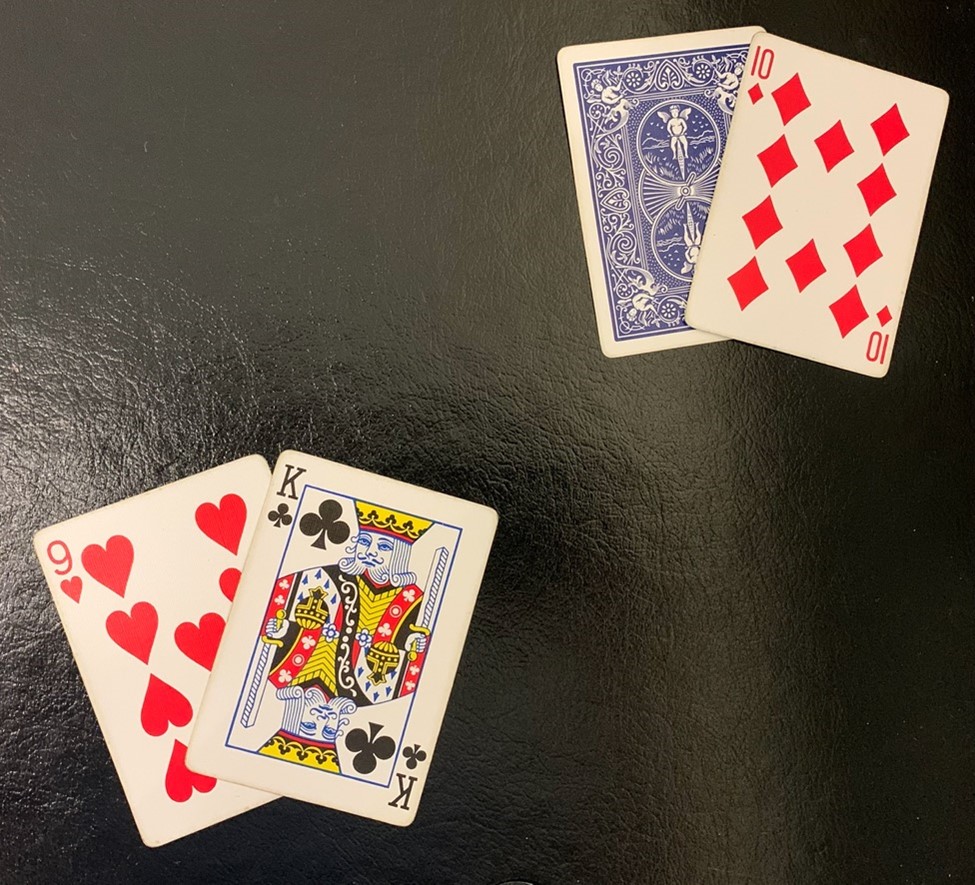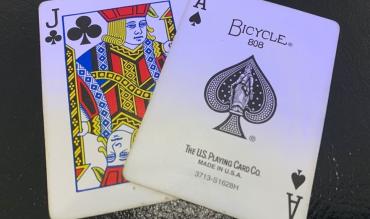Basic blackjack strategy is universally regarded as the ‘Best way to play blackjack against the casino’, based upon a specific set of rules. Given that casinos offer multiple blackjack variants, there are multiple basic blackjack strategies to implement. Consider the following blackjack variants that exist at Las Vegas casinos and Atlantic City casinos – Single Deck Blackjack, Double Deck Blackjack, and Multi Deck Blackjack games.
In 1953, Roger Baldwin published the first ever scientific study on basic blackjack strategy which became an international bestseller in 2008 (Playing Blackjack to Win: A New Strategy for the Game of 21). Edward Thorp contributed enormously to the subject with a basic blackjack strategy derived from results from high-speed computing devices.
Over the years, notable mathematicians, statisticians, scientists, and card players added their input, including the likes of Peter Griffin (Theory of Blackjack), Stanford Wong (Basic Blackjack), Julian Braun (How to Play Winning Blackjack), and Henry Tamburin (The Ultimate Blackjack Strategy Guide), et al.
These experts offer fascinating insights into the game, by providing useful blackjack tips, blackjack tactics, and blackjack strategies to beat the house on a more regular basis. In order to fully grasp the importance of a blackjack chart, distinctions have to be made between blackjack games with different rules. As a point of departure, we will first examine blackjack strategy charts when the dealer hits on soft 17.
This popular version of blackjack is enjoyed across the Las Vegas strip, and is predicated on the following rule, as explained by leading blackjack expert John Grochowski, ‘… A soft 17 includes an Ace being counted as 11. Ace-6 is a soft 17, as are Ace-2-4, Ace-3-3, Ace-5-5, and others.’ It is important to differentiate between blackjack games where the dealer hits on soft 17 (H17), and blackjack games where the dealer stands on soft 17 (S17).
Naturally, the blackjack chart that you use depends on the number of decks in play. The most commonly played games are Single Deck Blackjack (0.17% house edge), Double Deck Blackjack (0.46% house edge), Four-Deck Blackjack (0.60% house edge), 6 Deck Blackjack (0.64% house edge), and 8 Deck Blackjack Games (0.65% house edge).
A cursory glance at the house edge of the aforementioned games - the mirror image of the RTP (return to player) - indicates that Single Deck Blackjack Games offer the best possible winning chances for players. Given the specific blackjack game that is being played, and the attendant rules, it is possible to pick the perfect blackjack chart for that game.
Table of Contents
Picking the Perfect Blackjack Chart

Blackjack is a casino card game which is governed by rules. While there is a definite house edge, this can be minimized through perfect blackjack strategy, blackjack charts, card counting (where applicable), and careful bankroll management. Viewed in perspective, it is entirely possible for an advantage player in blackjack to whittle away the house edge to negligible proportions. Over the short-term, it is possible to beat the dealer time and again.
We now turn our attention to a blackjack strategy chart for use with Classic Blackjack with a single deck of cards. Players stand the best chance of winning when a single deck of cards is used. Depending on whether the dealer stands on soft 17, or hits on soft 17, specific decisions will be made.
Single Deck Blackjack where the Dealer Stands on Soft 17
Blackjack charts indicate whether a player should: Hit; Stand; Double If Allowed, Otherwise Hit; Double If Allowed, Otherwise Stand; Split; Split If Double after Split Is Allowed, Otherwise Hit; Split, If Double after Split Is Allowed, Otherwise Double; Surrender If Allowed, Otherwise Hit; Surrender If Allowed, Otherwise Stand.
Depending on the value of the player hand and the value of the dealer’s upcard, one of the aforementioned actions is strongly recommended by the blackjack strategy charts. Let us take 5 examples of player hands and dealer upcards to determine what actions to take using a blackjack chart:
• Player hand 5-7, Dealer card 8 HIT
• Player hand 12, Dealer card 10 HIT
• Player hand 16, Dealer card 6 STAND
• Player hand 15, Dealer card Ace HIT
• Player hand soft 18, Dealer card Ace STAND
The way to use a Single-Deck Blackjack Strategy Chart is to pick the action where the player hand value intersects with the dealer’s upcard.
NOTE: There are important differences between the Soft 17 Rule and the Hard 17 Rule. Consider that when the dealer hits on a soft 17, the probability of drawing hands 18+ in value increases for the dealer. In fact, estimates suggest that the soft 17 rule increases the house edge by 0.22%.
For the most part, casinos require dealers to stand on Soft 17. Since an Ace counts as either 1 or 11, the dealer has more opportunities to form a higher value hand when it includes an Ace. Fortunately, many online blackjack games and land-based blackjack games require the dealer to draw to 16 and stand on all 17s (hard and soft).
Now, if the dealer in a single deck blackjack game is allowed to hit on soft 17, there will be minor adjustments to the way players approach the game. Let's consider the following 5 examples of player hands and dealer up-cards:
• Player hand 4-7, Dealer card 8 HIT
• Player hand 12, Dealer card 10 HIT
• Player hand 16, Dealer card 6 STAND
• Player hand 15, Dealer card Ace SURRENDER, or HIT
• Player hand soft 18, Dealer card Ace HIT
Double Deck Blackjack Strategy Chart S17 (Doubling after Splitting)

With Double Deck Blackjack, S17, the blackjack strategy chart recommended to players is markedly different. We begin with an examination of 5 player hands, dealer upcards, and the actions taken by players:
• Player hand 10, Dealer card 8 DOUBLE, or HIT
• Player hand 18, Dealer card Ace STAND
• Player hand Ace-10, Dealer card 10 STAND
• Player hand 4-4, Dealer card 6 SPLIT
• Player hand 15, Dealer card Ace HIT
Double Deck Blackjack Strategy Chart S17 (No Doubling after Splitting)

Now we turn our attention to Double Deck Blackjack, S17 where there is No Doubling After Splitting, with the same 5 hand examples displayed above:
• Player hand 10, Dealer card 8 DOUBLE, or HIT
• Player hand 18, Dealer card Ace STAND
• Player hand Ace-10, Dealer card 10 STAND
• Player hand 4-4, Dealer card 6 HIT
• Player hand 15, Dealer card Ace SURRENDER, or HIT
For the most part, the blackjack charts for Double Deck Blackjack look almost identical, except for a few instances where there are clear differences in game play recommended to players.
Blackjack Charts, Blackjack Odds, and Blackjack Card Counting

Blackjack charts are based on probability analysis. It must be pointed out that these charts will not guarantee winning results on a game to game basis. They are calculated using statistical data from millions upon millions of blackjack hands that have been simulated. The analysis has determined that the recommended actions are statistically more likely to yield winning results for blackjack players.
Players are well advised to study blackjack strategy guides to understand when certain actions are preferred. Basic blackjack strategy is universally accepted as the single best way to win more blackjack games, lose less blackjack games, and make the right blackjack betting decisions.
With the right blackjack strategy in place, players will know when to Surrender, when to Hit, when to Stand, when to Split, when to Double Down, when to take Insurance, and when to take Side Bets. Other incredibly important determinants in your choice of blackjack games are the payouts associated with each table. Are you playing 6/5 blackjack (+1.39% of the house edge), or 3/2 blackjack? Of course, the latter is preferred, for obvious reasons.
As far as blackjack card counting goes, this practice falls into a grey area. For the most part, it is impossible to count cards in online blackjack games, owing to the fact that continuous card shuffling machines (after every hand dealt) remove the count after every game. If you happen to play classic blackjack with a single deck of cards, there may be some merit in this strategy, but it is minimal.
21 is the magic number in blackjack. But, it isn't necessary to hit a hand value of 21 to win. Players simply need to beat the dealer’s hand total to score a win. 10-Jack-Queen-King are all 10-value cards. Aces can count as 1 or 11. The rest assume their nominal value. As an example, cards valued between 2-6 are assigned a value of +1. Cards 7-9 assume a 0 value, and cards 10-Jack-Queen-King-Ace assume a value of -1.
The higher the negative count on the table, the greater the probability of a low-value card coming up. The higher the positive count on the table the lower the likelihood of a low-value card coming up on the next draw. In other words, a high-value card is expected. Generally speaking, high cards are beneficial to players and low cards are beneficial to the dealer. If applicable, blackjack card counting can be applied alongside blackjack strategy charts for optimal gameplay.
